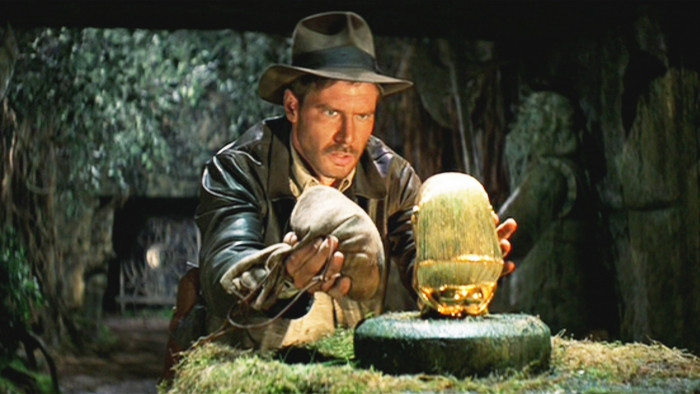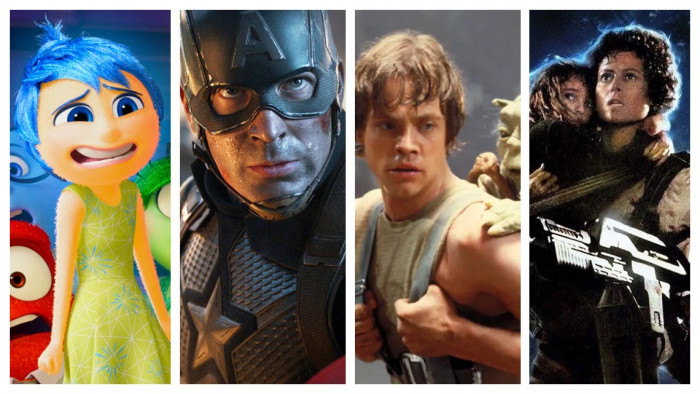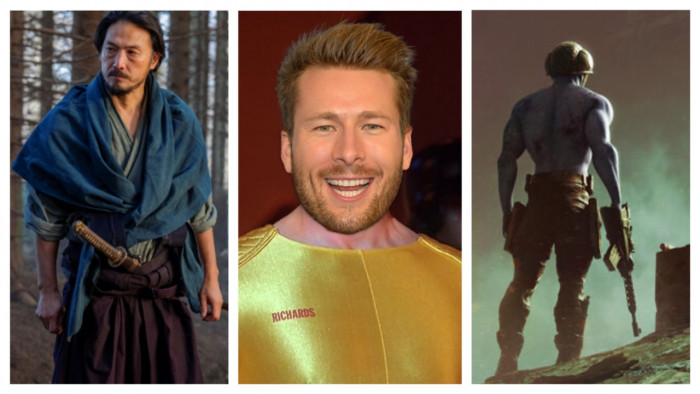It’s been 40 years since Get Carter first tore on to the British consciousness and altered the crime genre almost beyond recognition. Rob Crossan gets to grips with the ultimate tale of doomed violence
Quentin Tarantino named it as his all-time favourite British film. It’s regularly voted the greatest gangster film ever made. It has its own appreciation society and even gave a crumbling car park in Gateshead iconic status. When Get Carter was released in British cinemas in the spring of 1971, it redefined, in the words of lead actor Michael Caine, how this country saw violence and the criminal underworld. “Before Get Carter, movies always assumed that gangsters were either stupid, silly or funny,” he says. “I knew from my background that it wasn’t like that.”
Director Mike Hodges — for whom Get Carter was his first feature film, having previously worked in television documentaries in the Sixties — went even further in the film’s revolutionary depiction of Mob justice and corruption. “It reveals a side of Britain that people didn’t want. Get Carter shows a new type of Englishman coming up. When the film came out, we had a totally hypocritical view of what life in Britain was like, but now that has all been stripped away and you cannot deny that, like everywhere else, corruption is endemic.”
A sharp slap to the whimsical and essentially unrealistic ‘peace and love’ of Sixties London, Get Carter took the nation’s nose and rubbed it in the rather more bleak daily existence that was northern Britain at that time. “Hodges was performing an autopsy of society as he saw it in that moment, using the crime genre,” says Steve Chibnall, professor of British cinema at De Montfort University and author of Get Carter: A British Film Guide. “He was very keen that the film was a wake-up call; that things are much worse than the superficial image of swinging Britain suggests. It’s not all parties in penthouses in London.
“It plays on a similar atmosphere to more recent productions such as [2009’s made-for-TV film trilogy] Red Riding,” he continues. “It’s that dark heart of northern England that Get Carter taps into.” But suddenly the dark heart was no longer confined to provincial towns — it was paraded in cinemas across the Western world — and even more startling was that in its lead role was an actor best known for playing Charlie Croker in The Italian Job, an altogether different kind of career criminal. Unrelenting, with no redeeming characters and shot in the social-realist style, it left an indelible scar on this country’s cinematic canon, shattering the boundaries of violence and realism in mainstream cinema, becoming, arguably, the pinnacle of the British gangster film tradition.
A NEW WORLD
Based on Jack’s Return Home, a novel by crime author Ted Lewis published a year prior, the story followed a London gangster returning to his northern home town to avenge the death of his brother at the hands of a brutal pornography ring. Within a surprisingly short 36 weeks, a budget had been agreed (£462k, which was tiny, even 40 years ago) between Hodges and MGM Studios, Caine had been hired to play the lead role of Jack Carter, it had been shot on location in the Newcastle Upon Tyne area and the film had been released to a shocked and often repulsed audience.
“A revolting, bestial, horribly violent piece of cinema,” declared the London Evening News upon the film’s opening. Other critics lined up to take pot shots at the film’s unremitting bleakness and brutality. “About as pleasant as a bottle of neat gin swallowed before breakfast — intoxicating, but bad for you,” said George Melly in The Observer.
The film depicts a long-vanished vision of Newcastle. Skies are lead-grey, pubs are festering hovels of brawls and cigarette smoke and guest houses have bed pans underneath the stained mattresses. Amid the grime, poverty and decay are underworld bosses, enjoying debauched parties in country manors, paid for by their vicious success in extortion and pornography rackets.
“I had never witnessed misery like this in my own country,” Caine remarked after shooting on location in the city. “It was like Charles Dickens meets Emily Brontë, written by Edgar Wallace.” Having trawled the east coast for a suitable location, Hodges recalls that the only place that had parts that had still survived the developers was Newcastle. “The visual drama took my breath away,” he says. “Seeing the great bridges crossing the Tyne, the waterfront, the terraced houses steeped up each side of the deep valley… We’d got there in time. But only just.” Any later and the grimy landscape — vital through its poverty and neglect in supporting Carter’s cruel and grim narrative — would be lost forever to Seventies urban development.
“Get Carter is very significant on Tyneside as there are a lot of people who regard it as a time capsule for a way of life and an environment that has now vanished,” says Chibnall. “It was a city on the cusp.” The back-to-back terraces were being pulled down and replaced with ubiquitous glass and concrete buildings, while traditional heavy industry of ship-building and mining were fading out to make room for leisure industries, with dubious connections to organised crime. “Newcastle was a bit like a frontier boom town in 19th-century America,” he says, “in that law and order were lax and the gaming and nightclub industry were on full-burner, so it was a place of opportunities amid long-term decline.”
Britain itself was about to enter one of its darkest decades. Three-day working weeks, power strikes, IRA bombings and the rise of the National Front were all coming to British towns, and Caine’s sinister presence in almost every scene of the film with an expression of stoical menace as he stalked the streets, bingo halls, nightclubs and betting shops of Newcastle in order to exact a chilling vengeance is reminiscent of a folkloric grim reaper — “an avenging ‘Angel Of The North’”, suggests Chibnall.
Brandishing a second-hand shotgun and wearing a blue mohair three-piece suit, double-breasted raincoat, boot-cut trousers and a tie with a knot just the fashionable side of early-Seventies chic, he appeared to be single handedly drawing the curtain on Sixties’ optimism in favour of something more malevolent. For the first time, it associated a character’s actions to societal change. Hodges later explained that the activities of the Kray brothers were an influence on Get Carter. Dressed immaculately and with sentimentality for family, traits that the infamous Ronnie and Reggie shared with Jack Carter, Hodges wanted the film to express both the changing nature of crime and to show for the first time, realistically, how acts of violence actually look to the naked eye.
VIOLENCE IN A NEW LIGHT

“In real life, every punch in the face tears skin and cartilage, and often breaks bones,” remarked Caine in his 1993 autobiography What’s It All About? “We decided to make the movie more realistic in this respect… We had to show violence as it really was.”
“That’s why Mike Hodges is such a great writer-director,” says Britt Ekland, whose raw, undiluted phone-sex scene with Caine showed it wasn’t just the violence that was realistic. “He’s very honest. In those days there was no digital fiddling about. It was exactly what you saw. There are no added scenes, no machinery that wasn’t physically used by the people involved.”
As such, it has since been bandied together with other similar films of the period — A Clockwork Orange and, in particular, Straw Dogs — that were looking at the very nature of violence and pushing the boundaries of good taste within cinematic entertainment. But it was Get Carter that took its protagonist to the very end. With such hard-hitting brutality, the reviews of horrified critics were no surprise. What did amaze Hodges, and to some extent, Caine, was how the audience found some sympathy with the ruthless, trigger-happy Carter. “Hodges thought that Carter was a dreadful b*stard,” explains Chibnall, “as everyone calls him in the film. But audiences warmed to his righteous crusade. It hit a nerve. As corruption was exposed and people lost faith in the institutions of society, Get Carter grew in popularity. It gave expression to that sort of rage, that indignation. People can identify with that.”
Which isn’t to say that the film entirely lacks a certain gallows charisma, as Aubrey Day, editor-in-chief of Total Film magazine, explains: “People are right to say that this is a cold, harsh, nasty film full of sadness and regret. But it also has a very black humour and is incredibly quotable. If you ever hear the line ‘p*ssholes in the snow’ to describe someone’s eyes, or hear the line ‘you’re a big man, but out of shape’, you know that they’ve been watching Get Carter.”
Ekland agrees: “Very few filmmakers have achieved that grittiness and dark sense of humour at the same time. I mean, who would ever think of a naked Michael Caine coming out with a gun in a precarious position?” The combination of brutal violence in the midst of such physical harshness reached its peak in the scenes filmed in a multistorey car park in Gateshead. Carter, at this point in the middle of an orgy of murder, throws bent arcade owner Cliff Brumby (Bryan Mosley) off the top of the roof of the structure. An epic pile of concrete, the car park itself was built in the late Sixties as the ultimate example of the doomed hubris that was razing historic town centres to the ground all over the UK. Town planners and local politicians such as Newcastle Council leader T Dan Smith, later jailed for corruption, were convinced at the time that high-rises and concrete such as the ‘Carter Car Park’ were the answer to poverty and social dysfunction. Time proved the folly of their ambition and the car park itself — having long been closed for safety reasons — was finally demolished last year.
BACK FROM OBLIVION
The vision of an old Britain being swept away in favour of a doomed, concrete future by callous social engineers was the perfect backdrop to Carter’s mission of vengeance. Though nobody involved in the film at the time could have guessed just what long-term impact it would have. “I hated the idea of having to take my clothes off, but I was completely broke,” says Ekland. “My accountant had wrongly invested all my money. I had nowhere to live and no income, so I told my agent to get me anything he could. It was a fortunate twist of fate in the end, as it’s an unbelievably great film. If it wasn’t for the cars and the sideburns, that film could’ve been made yesterday.”
As for Get Carter, it lapsed into obscurity for the best part of a quarter of a century. “The elements of the zeitgeist were against it,” explains Chibnall. “It fell foul of feminist critics who criticised the unreconstructed masculinityand the appalling way that he treats women. Things didn’t change until the Nineties and the growth of ‘lad culture’ which adopted Carter as an emblem of itself.”
Not only was it made into a cartoon strip for lads’ mag Loaded (“It was sticking two fingers up at political correctness,” says Chibnall), it was also given a huge boost by an emerging, genre-busting director. In 1993, at a film symposium in Nottingham, Quentin Tarantino name-checked the film, citing it as a major influence. And so it regained its popularity in the eyes of those who followed him. Guy Ritchie not only had a Get Carter poster on his office wall, but he also spliced an element of it into the publicity poster for 1998’s Lock, Stock And Two Smoking Barrels — with Vinnie Jones instead of Caine holding a rusty shotgun. This did more than reference the original; it thrust the film back into endless ‘must-see’ lists in film and men’s magazines, citing it as a pivotal work of British cinema.
Fortunately, in the eyes of most fans, Carter’s death at the end of the film closed the door on the possibility of any sequels potentially damaging the reputation of the original. “I would have loved it if Carter had walked away,” says Caine. “But we killed people off in those days. I’ve died in a lot of my movies.” The loyalty to the film has built up to such a degree that when an embarrassingly poor remake with Sylvester Stallone was released a decade ago, it wasn’t even shown in UK cinemas. And for all its unmitigated violence and dislikable characters, Get Carter’s redeeming features will always win through. Chibnall explains: “Although it’s a hard-boiled gangster film, it’s also an intelligent film, a film of ideas, a film with something to say, and beautifully shot.” If any film deserves the title ‘iconic’, then Get Carter — the greatest of the British gangster genre — is surely a contender.
(Images: All Star, Rex Features)
Get Carter: A British Film Guide by Professor Steve Chibnall is out now, priced £12.99 (IB Tauris)
Latest
Related Reviews and Shortlists


The 10 best war movies of the 21st century









